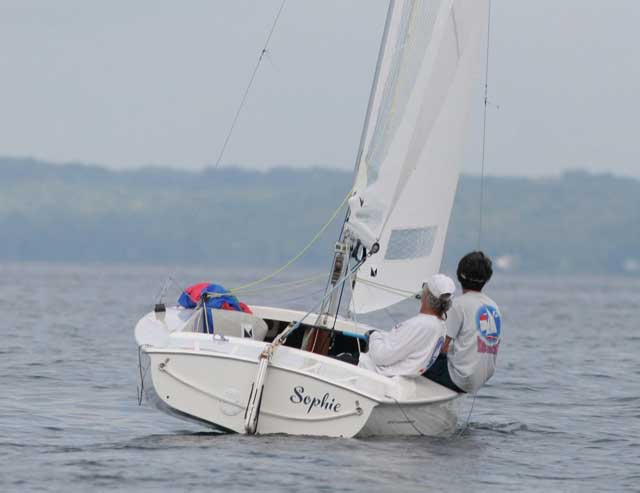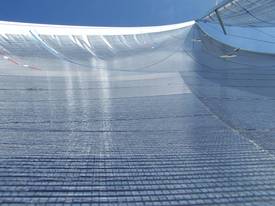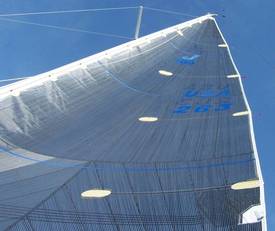Today’s forecast for Saturday is on the lightish side. Just in case that actually turns out to be the case, here’s some tips on light air sail trim from Chuck Skewes of Ullman Sails San Diego and Seattle.

Light Airs.2-8 Knots.
We will start with light airs upwind sailing. Something that seems unlikely at the moment but with summer coming we will soon be drifting around evening racing and struggling to get back to the line.
The most important thing to remember is there are no hard and fast rules. Whatever works for you and your boat will not be the same for everyone. The only thing that remains the same is that boat speed makes you look good. We can all point straight up wind and not go anywhere but in light airs the people who move are the people who win.
Sail choice is the hardest part. We normally use the rule of thumb that it’s the number one until you can hold crew on the windward rail.
Adjustments should be made gently, the aim is to improve the flow. Not to stop it and start it again once the sail is set.
Keeping crew weight low and forward is the norm in these conditions but try to keep it compacted together as well. Most hull designs will have a lower wetted area with this weight forward approach.
Many helms like to drive from the leeward side in these conditions. Try to limit the helms time to leeward to mark roundings. Sitting low by the water can mislead you into thinking you are going fast.
Headsail

Light air jib shape
1.Backstay Eased. This allows the forestay to sag inducing more fullness in the headsail.
2.Luff tension eased allowing the sail to sit as full as possible to it’s design shape. Typically some small creases may form in the luff. Don’t worry, this is fast…
3. Jib car. The relationship between car and sheet is imperative. Moving the car forward makes the sail fuller in the lower section. The sheet tension will control the twist in the leech. In light airs you are looking for shape low and twist in the leech to keep air flowing onto the mainsail.
Mainsail

Light air main shape
1. Backstay Eased. Mast as straight as possible making the main full.
2.Luff Tension Eased. Again some small creases are nothing to worry about.
3. Outhaul eased, typically you should be able to get your hand easily between the boom and the sail.
4.Leech. The aim is to keep the telltales flying to keep flow across the mainsail and therefore drive. Tensioning the leech will allow you to point but may lead to stalling the main. Keep it on the fast side of too tight is our advice.